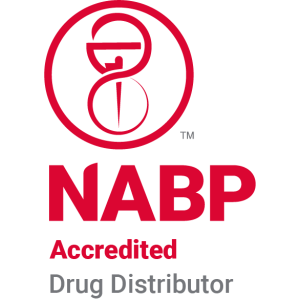How to Reduce the Risk of Osteoporosis in Long-Term TPN Patients
Understanding and Mitigating Osteoporosis Risks in Parenteral Nutrition
Long-term total parenteral nutrition (TPN) is a lifesaving intervention for patients with severe gastrointestinal issues, yet it unfolds a spectrum of challenges, notably metabolic bone disease, including osteoporosis and osteomalacia. This article seeks to explore comprehensive strategies—nutritional, lifestyle, and clinical—to reduce osteoporosis risk in TPN patients, emphasizing evidence-based methodologies for prevention and management.
Metabolic Bone Disease and Its Link to Long-Term TPN

What common complications are associated with long-term TPN use, and how can they relate to bone health?
Long-term parenteral nutrition (TPN) can lead to several health issues, including complications affecting metabolic, hepatic, infectious, and musculoskeletal systems. A significant concern is metabolic bone disease (MBD), which manifests as osteoporosis or osteomalacia. These conditions are characterized by decreased bone mineral density, vulnerability to fractures, and bone pain.
The development of MBD in TPN patients is often linked to deficiencies in essential minerals and vitamins, such as calcium, phosphate, magnesium, and vitamin D. Inadequate provision of these nutrients, combined with decreased physical activity common in these patients, hampers normal bone remodeling.
Additionally, aluminum contamination in older TPN solutions contributed to bone toxicity by impairing osteoblast function, though modern solutions contain reduced aluminum levels. Other side effects include the accumulation of aluminum in bones, which further inhibits bone formation.
Besides bone issues, TPN-related complications include infections related to catheter use, liver problems such as fatty liver and cholestasis, along with thrombosis and gallbladder issues. These complications collectively influence overall health and highlight the importance of comprehensive management and monitoring during long-term TPN therapy.
What are the current guidelines and evidence-based approaches for preventing and managing osteoporosis in TPN patients?
Preventing and treating osteoporosis in TPN patients involves a multifaceted approach. Guidelines recommend ensuring adequate mineral and vitamin intake — particularly calcium (~15 mEq/day), magnesium, phosphorus, and vitamin D — through appropriately formulated TPN solutions.
Regular surveillance using dual-energy X-ray absorptiometry (DXA) is critical, especially in individuals with additional risk factors like postmenopausal status or prolonged TPN duration. Early detection allows timely intervention.
Therapeutic strategies include correcting nutritional deficiencies, optimizing physical activity (weight-bearing exercises), and avoiding secondary causes such as medication-induced bone loss.
Pharmacologic treatments, like bisphosphonates (e.g., pamidronate), have shown efficacy in improving bone density. Hormone replacement therapy may also be considered where appropriate.
Furthermore, addressing underlying conditions, minimizing aluminum load, and potentially using novel therapies that enhance calcium absorption or promote bone formation are emerging areas of interest.
What are the key considerations in the management of metabolic bone disease, including osteoporosis, in long-term TPN patients?
Effective management focuses on maintaining bone health through regular assessment and targeted interventions. Monitoring includes biochemical markers—serum calcium, phosphate, magnesium, and vitamin D—and periodic DXA scans to track bone mineral density.
Correction of nutritional deficits is paramount. TPN formulations should supply balanced amounts of calcium, phosphorus, and vitamin D. Sometimes, supplementation might be necessary if dietary intake falls short.
Addressing secondary factors such as medication effects, vitamin D deficiency, or aluminum accumulation is essential. If indicated, pharmacologic agents like bisphosphonates can be administered after careful evaluation.
An interdisciplinary approach, involving nutritionists, endocrinologists, and other specialists, is critical. Lifestyle interventions such as weight-bearing activities and avoiding substances detrimental to bone health, like excess alcohol or caffeine, can help reduce fracture risk.
In conclusion, customizing strategies based on individual patient risk factors and ongoing monitoring optimizes outcomes and mitigates the impact of TPN-associated bone disease.
Nutritional Strategies for Bone Preservation in TPN Patients

What nutritional strategies can support bone health in TPN patients?
Long-term total parenteral nutrition (TPN) can lead to metabolic bone diseases such as osteoporosis and osteomalacia. To mitigate these risks, careful attention must be given to the mineral and vitamin content of TPN formulations. Ensuring adequate provision of calcium, phosphorus, magnesium, and vitamin D is crucial for proper bone mineralization.
Monitoring serum levels of these nutrients allows clinicians to identify deficiencies early and adjust TPN formulas accordingly. For example, calcium intake should normally reach around 15 mEq/day, and magnesium and phosphorus must also be supplied in appropriate amounts to maintain balance.
Furthermore, avoiding aluminum contamination in TPN solutions is vital, as aluminum accumulation has been linked to impaired bone formation and osteomalacia. Modern solutions with reduced aluminum content help mitigate this issue.
Regular assessments of bone mineral density through DXA scans, along with clinical monitoring for signs of metabolic bone disease, are key components of management. Addressing underlying health conditions and medication use that impact bone health forms an essential part of comprehensive care.
By adopting these nutritional strategies, healthcare providers can help sustain bone integrity and reduce fracture risk in patients dependent on prolonged TPN therapy.
How can dietary intake and supplementation be optimized to prevent osteoporosis?
A practical approach involves daily consumption of three to four servings of calcium-rich foods such as milk, cheese, yogurt, or calcium-fortified orange juice and plant-based milks. These foods serve as primary sources to meet dietary calcium requirements essential for maintaining bone density.
When dietary intake is insufficient, calcium and vitamin D supplements are often necessary. Publicly available resources, like specialized webpages, can help individuals determine their exact needs based on age, health status, and dietary habits.
Good dietary sources of calcium include dairy products, canned sardines and salmon with bones—both rich sources of naturally occurring calcium—and calcium-fortified foods. Vitamin D is primarily found in fatty fish and fortified foods and is necessary for calcium absorption.
A balanced intake of other nutrients supporting bone health, such as magnesium, potassium, vitamin C, and vitamin K, should also be emphasized via a varied diet rich in fruits and vegetables. These nutrients facilitate bone matrix formation and mineralization.
It is advised to avoid high oxalate greens like spinach, which can interfere with calcium absorption, and phytate-rich foods such as wheat bran, which reduce calcium bioavailability.
Proper nutrition combined with appropriate supplementation forms a cornerstone in preventing osteoporosis, especially in populations at higher risk due to malabsorption or other health issues.
Impact of Long-Term TPN on Bone Density and Fracture Risk

What impact does long-term TPN have on bone density and osteoporosis development?
Long-term total parenteral nutrition (TPN) is linked to a higher risk of developing metabolic bone diseases, including osteoporosis and osteomalacia. These conditions arise from multiple factors such as nutritional deficiencies—particularly calcium, magnesium, and vitamin D—as well as issues with mineralization and bone turnover. Although initial concerns focused on aluminum contamination in TPN solutions causing bone damage, current research indicates that the underlying problem is more complex.
Patients on prolonged TPN often experience insidious symptoms like bone pain, fractures with minimal trauma, and reduced bone mineral density. Dual-energy X-ray absorptiometry (DXA) scans are instrumental in monitoring these changes. Properly managing bone health involves adjusting TPN formulations to ensure adequate mineral and vitamin D supplementation. Regular assessments allow for early detection of bone deterioration, and pharmacological agents might be necessary in some cases.
Overall, long-term TPN significantly increases the risk of osteoporosis and osteomalacia, emphasizing the importance of vigilant nutritional management and timely intervention to prevent severe skeletal complications.
How does aluminum contamination influence bone quality in TPN patients?
Aluminum exposure from contaminated TPN solutions can accumulate in bones, impairing normal bone formation and mineralization processes. Aluminum deposits interfere with the osteoid matrix, leading to inadequate calcification and the development of osteomalacia, which often presents alongside osteoporosis.
Bone histomorphometry studies reveal that excessive aluminum in bones correlates with decreased bone formation activity. This accumulation results in patchy osteomalacia characterized by a reduction in bone matrix quality and abnormal mineralization, weakening the skeletal structure.
Switching from high-aluminum solutions to amino acid formulations low in aluminum has shown promising results. Such modifications reduce aluminum accumulation, improve bone formation rates, and lead to measurable increases in bone mineral density. These findings highlight the critical need to use low-aluminum or aluminum-free TPN components to protect bone health, particularly in long-term recipients.
Pharmacological and Therapeutic Approaches to Bone Disease in TPN

What treatments have been effective in managing osteoporosis in TPN patients?
Managing osteoporosis in long-term total parenteral nutrition (TPN) patients requires a multifaceted approach. Recent studies have shown that bisphosphonates, such as pamidronate, are particularly effective. In one notable investigation, six pediatric patients receiving extremely long-term home TPN demonstrated significant improvement in bone mineral density after six and twelve months of intravenous pamidronate at doses of 30 mg monthly over six months.
This therapy helped reduce signs of osteoporosis without causing prominent adverse effects. The improvements were gauged through follow-up dual-energy X-ray absorptiometry (DXA) scans, which showed no patients with Z-scores below -2.5 and no fractures occurred during a 108-month period. Biochemical markers such as serum calcium, phosphorus, and vitamin D levels remained within normal ranges, indicating that pamidronate's benefits in increasing bone density do not come at the expense of disrupting mineral balance.
Alongside bisphosphonates, other treatments such as calcitonin and sex hormones have been considered in certain cases. However, bisphosphonates currently form the cornerstone of pharmacological management due to their specific action on osteoclast inhibition, which reduces bone reabsorption.
Effective management also relies heavily on correcting nutritional deficiencies. Adequate provision of calcium (around 15 mEq/day), magnesium, and phosphorus in PN formulations, along with vitamin D supplementation, forms an essential part of treatment. It’s crucial that ongoing monitoring of bone mineral density and serum biochemical markers guides therapy to ensure both safety and efficacy.
Are there emerging therapies or interventions for maintaining bone health in long-term TPN patients?
Research into long-term solutions for bone health in TPN patients continues to evolve. Emerging therapies focus on optimizing gastrointestinal absorption and minimizing toxic mineral accumulation, especially aluminum, which historically contributed to bone pathology.
Innovative approaches include improved TPN formulations that contain lower aluminum levels, thereby reducing the risk of aluminum-related impairments in bone formation. For instance, switching from casein hydrolysate-based solutions, which are high in aluminum, to amino acid-based formulations has demonstrated improvements in bone formation markers and reductions in aluminum content in bone tissue.
Furthermore, novel pharmacological agents aimed at enhancing bone matrix formation and mineralization are under investigation. Growth factors and other bone anabolic agents may offer future benefits, especially when combined with lifestyle strategies.
Non-pharmacologic interventions continue to be fundamental. Weight-bearing and resistance exercises improve mechanical loading on bones, promoting strength and density. Nutritional management emphasizing optimal calcium and vitamin D intake, alongside correction of deficiencies, remains vital.
The future of bone health management in TPN patients also involves personalizing therapy based on biochemical markers, bone density assessments, and individual risk factors. Enhanced formulations and optimized treatment protocols will improve long-term outcomes and quality of life for this vulnerable population.
| Aspect | Current Approach | Future Directions | Notes |
|---|---|---|---|
| Pharmaceuticals | Bisphosphonates (pamidronate), calcitonin, sex hormones | New anabolic agents, growth factors | Focused on reducing osteoclast activity and promoting bone formation |
| Nutritional | Adequate calcium, vitamin D, correction of deficiencies | Improved mineral formulations, aluminum-free TPN | Aims to minimize toxic mineral accumulation and promote absorption |
| Lifestyle | Weight-bearing exercises, physical activity | Personalized exercise regimens | Enhances mechanical stimulus on bones; tailored to each patient |
| Monitoring | Bone densitometry, serum biochemical markers | Advanced imaging, biochemical profiling | For ongoing assessment and treatment adjustment |
This comprehensive management strategy underscores the importance of combining pharmacologic interventions with nutritional optimization and physical activity, all tailored to individual patient needs. As research progresses, new therapies promise to further improve outcomes for TPN-associated osteoporosis.
Integrating a Multidisciplinary Approach for Bone Health Preservation
Preventing osteoporosis in long-term TPN patients requires a holistic strategy encompassing optimized nutrition, lifestyle modifications, vigilant monitoring, and appropriate pharmacological interventions. Ensuring balanced mineral and vitamin intake, regular bone density assessments, and managing secondary risk factors are critical. Advances in formulation and treatment options, coupled with patient education, can significantly improve quality of life and minimize fracture risk. A multidisciplinary team, including clinicians, dietitians, and physical therapists, plays a pivotal role in orchestrating these efforts, ensuring that long-term TPN therapy supports not just vital nutrition but also robust bone health.
References
- Nutrition, Physical Activity, and Dietary Supplementation to Prevent ...
- [PDF] Metabolic Bone Disease in the Patient on Long-Term Parenteral ...
- Treatment with pamidronate for osteoporosis complicating long-term ...
- Osteoporosis Diet & Nutrition: Foods for Bone Health
- Osteoporosis in Patients on Long‐Term Home Parenteral Nutrition ...
- Metabolic bone disease of total parenteral nutrition
- Top 6 Risks of TPN You Need To Know
- Nutrition - International Osteoporosis Foundation
- Parenteral Nutrition: What it Is, Uses & Types - Cleveland Clinic
- Bone disease in prolonged parenteral nutrition: osteopenia without ...













